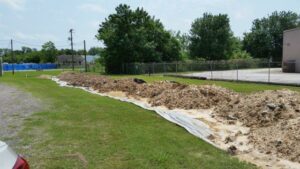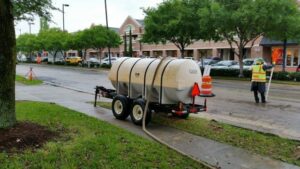Environmental Services for Construction within Potentially Petroleum Contaminated Areas (PPCAs)
 Federal, State, County, and Municipal government utility and construction projects manage contaminated waste where PPCA sampling, analysis, reporting, permitting, subcontractor oversight, construction worker safety monitoring, and waste management are required as part of the project plans and specifications. Each governmental entity has provided for this level of waste management in an effort to protect human health, construction workers, and the environment from the spread or exposure to contaminated soil, ground water, and surface water.
Federal, State, County, and Municipal government utility and construction projects manage contaminated waste where PPCA sampling, analysis, reporting, permitting, subcontractor oversight, construction worker safety monitoring, and waste management are required as part of the project plans and specifications. Each governmental entity has provided for this level of waste management in an effort to protect human health, construction workers, and the environment from the spread or exposure to contaminated soil, ground water, and surface water.
PPCA projects usually include the following:
- Pre-design development Phase I and Phase II Environmental Site Assessments
- Preparation of Project Plans and Specifications outlining the PPCAs and measure to be taken
- Preparation of Environmental Health and Safety and Environmental Work Plans
- Utility and building construction excavation oversight
- Waste soil and water screening during construction activities in PPCAs
- Segregation, sampling, and laboratory chemical analysis of waste
- Profiling, and approval to dispose at licensed and approved disposal facilities
Close coordination and strategic planning are only a minor part of executing the projects with minimal disruptions to the flow of construction activities at each site. These can be provided for Federal, State, and Local government as well as private construction projects.



Tips for Potentially Petroleum Contaminated Areas (PPCA’s)
Many proposed construction sites are potentially impacted with PPCA and other regulated chemicals that pose threats to the owner and other stakeholders related to: construction worker and public environmental health and safety, and to waste management and disposal liabilities. Tips to successfully designing, procuring, and executing this type of project with safe and cost effective results includes proper assessment, planning, contracting, and management of the project. We recommend thorough Phase I and II Environmental Site Assessments to identify potential contamination sources prior to or during design development. The extent of impacts to soil, groundwater, surface water, and air should be determined, and site specific design documents prepared for bid solicitation and construction.
